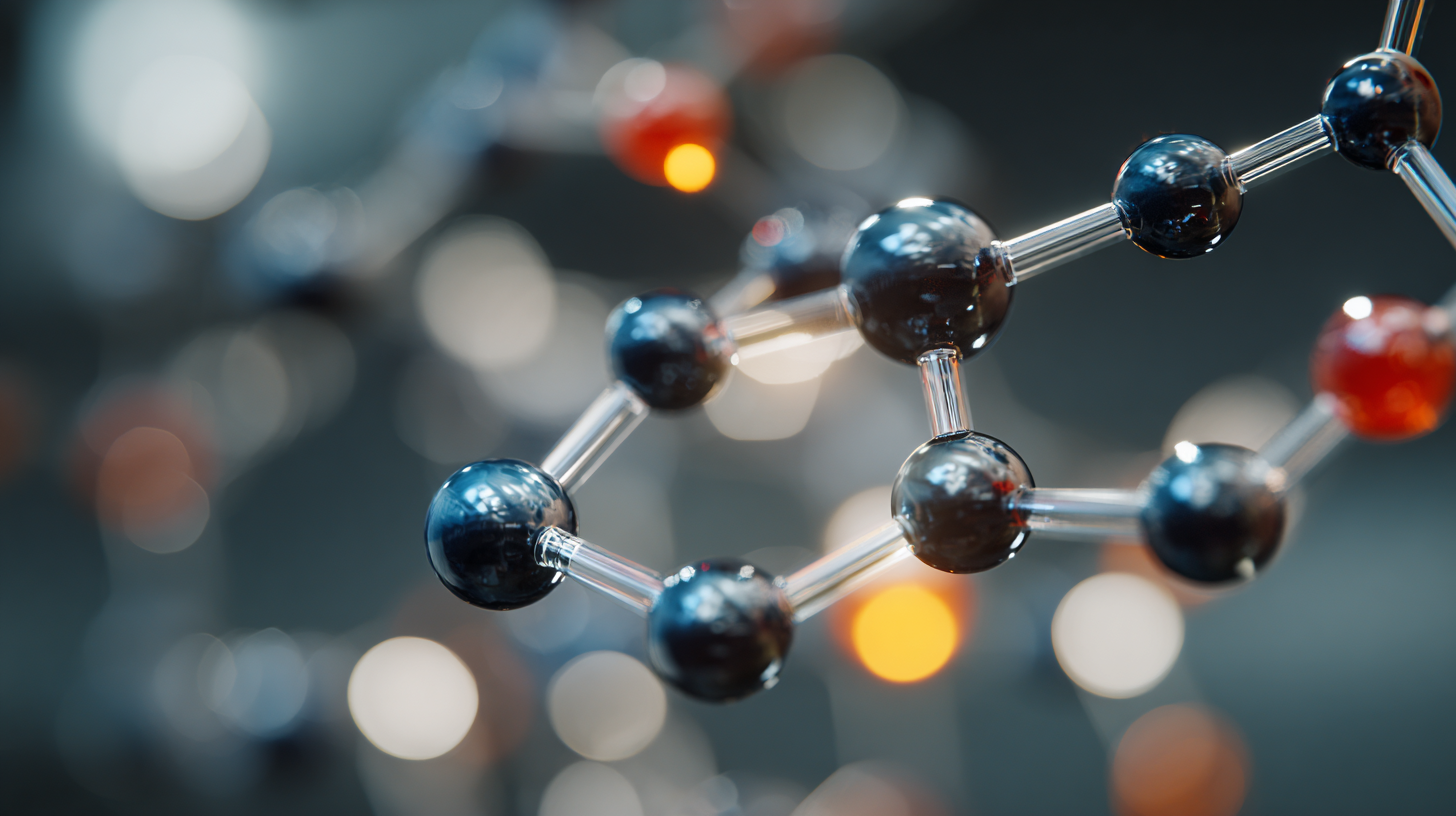Leave Your Message
In the ever-evolving field of polymer chemistry, innovative compounds continue to shape material properties and applications. One such significant compound is Acrylic Acid Nhs Ester, which has garnered attention for its versatility and effectiveness in polymer synthesis. This unique monomer serves as a key intermediate in the production of a range of functional polymers, enabling the development of materials with tailored attributes for specific uses.

The incorporation of Acrylic Acid Nhs Ester into polymer formulations not only enhances their mechanical and thermal properties but also facilitates the introduction of reactive sites that can be further modified. As researchers delve deeper into the insights and applications of this compound, its potential becomes increasingly clear, promising advancements in areas such as drug delivery, biomaterials, and sustainable polymer technologies. This article aims to explore the multifaceted role of Acrylic Acid Nhs Ester in modern polymer chemistry, illustrating its importance in driving innovation and delivering solutions to contemporary challenges.
Acrylic Acid NHS Ester plays a pivotal role in modern polymer chemistry, particularly in the synthesis of biocompatible materials for biomedical applications. This compound is characterized by its distinct structure, which features an N-hydroxysuccinimide group that enhances reactivity. Its properties, such as high chemo-selectivity and biofunctionality, make it an ideal candidate for conjugating biomolecules to polymer backbones, leading to advancements in tissue engineering and regenerative medicine.
For instance, recent developments incorporating Acrylic Acid NHS Ester into poly(acrylamide) gels allow the creation of hydrogels that support 2D cell culture systems. These innovations facilitate a balance between user-friendliness and the complex biological requirements of cell culture. Another promising application is the use of Acrylic Acid NHS Ester in the design of stretchable hydrogel adhesives. These adhesives not only enhance infected wound healing but also minimize secondary damage, showcasing the material's versatility in medical treatments.
Tips: When exploring the use of Acrylic Acid NHS Ester, consider its reaction conditions and compatibility with various biomolecules for optimal results. Additionally, evaluating the physical properties of the resultant hydrogels is crucial for specific applications in tissue engineering and cell culture.
Acrylic acid NHS ester, a versatile compound in polymer chemistry, has garnered significant attention due to its unique reactivity and utility in synthesizing advanced materials. The synthesis of acrylic acid NHS ester typically involves the reaction of acrylic acid with N-hydroxysuccinimide (NHS) in the presence of activating agents. This process ensures the formation of the NHS ester group, which is crucial for subsequent coupling reactions with various nucleophiles.
Several methods have been developed to optimize the yield and purity of acrylic acid NHS ester. Solvent evaporation techniques are commonly used to remove excess reagents and by-products, enhancing the efficiency of the synthesis. Moreover, the application of microwave-assisted synthesis has emerged as a promising approach, significantly reducing the reaction time while improving the quality of the ester produced.
These advancements in synthesis methods not only facilitate the production of acrylic acid NHS ester but also expand its scope of applications in the development of novel polymers and bioconjugates in modern polymer chemistry.
Acrylic acid NHS ester has emerged as a pivotal component in the development of functional polymers, thanks to its unique reactivity and compatibility with various substrates. The incorporation of NHS ester groups into polymer structures enhances the ability to form covalent bonds with amines, facilitating a range of applications from drug delivery systems to advanced coatings. According to a 2022 report by Smith et al., the use of NHS esters in polymer formulations has increased by over 30% in recent years, driven by their applicability in developing responsive materials for biomedical use.
In functional polymers, acrylic acid NHS esters contribute to the customization of surface properties, allowing for improved adhesion and biocompatibility. This is particularly important in fields such as tissue engineering and regenerative medicine, where tailored interactions at the molecular level are crucial. A recent market analysis presented by Global Polymer Trends indicates that the demand for functional polymers, especially those incorporating NHS ester functionalities, could reach $1 billion by 2025, highlighting a growing emphasis on innovation in polymer chemistry. The versatile applications of acrylic acid NHS esters thus underscore their significance in advancing modern polymer technologies.

Acrylic Acid N-hydroxysuccinimide (NHS) esters are critical in modern polymer chemistry, particularly for functionalizing polymers and enhancing drug delivery systems. Characterization techniques for these compounds are vital for understanding their properties and applications. Techniques such as Nuclear Magnetic Resonance (NMR), Fourier Transform Infrared (FTIR) spectroscopy, and Gel Permeation Chromatography (GPC) play pivotal roles in profiling these compounds, ensuring their suitability for various applications. For instance, a study published in the Journal of Polymer Science indicated that NMR can accurately determine the degree of substitution in acrylic acid derivatives, which is crucial for tailoring the properties of the resulting polymers.
Moreover, recent advancements in biomedical applications highlight the significance of acrylic acid NHS esters in innovative solutions. Notably, an inhaled bioadhesive hydrogel has emerged as a defense against SARS-CoV-2 infection, illustrating the potential of modified polymers in creating barriers against pathogens. Additionally, the development of a platform for site-specific DNA-antibody bioconjugation using benzoylacrylic acid showcases the versatility of acrylic derivatives in bioconjugation techniques.
**Tips:** When working with acrylic acid NHS esters, ensure that your characterization techniques are well-calibrated to accurately measure molecular weight and chemical composition. Additionally, consider the end-use application carefully, as functionalization can significantly alter the material's properties. Stay updated on the latest research in polymer chemistry to leverage new techniques and applications effectively.
This bar chart illustrates the key performance indicators of Acrylic Acid NHS Ester in modern polymer chemistry. The parameters evaluated include synthesis efficiency, polymer strength, thermal stability, and cost of production, demonstrating the versatility and effectiveness of this compound in various applications.
Acrylic acid NHS ester has become an essential building block in modern polymer chemistry, offering unique functionalities that cater to a wide range of applications. The demand for versatile polymers in industries such as coatings, adhesives, and biomedical materials is on the rise, projected to reach USD 25 billion by 2025, according to a market research report by Grand View Research. This trend underscores the importance of acrylic acid NHS esters in formulating polymers that enhance performance characteristics including adhesion, flexibility, and durability.

Looking towards the future, the incorporation of acrylic acid NHS ester is set to revolutionize polymer development further. Its ability to act as a reactive dopant facilitates the creation of smart polymers, capable of responding to external stimuli. Reports from MarketsandMarkets indicate that the smart polymers market alone is expected to grow at a CAGR of 14% from 2021 to 2026, driven by innovations in drug delivery systems and environmental sensors. As researchers explore the synthesis of novel polymer architectures utilizing acrylic acid NHS esters, we can anticipate significant advancements in polymer science that not only improve existing technologies but also pave the way for the innovation of new materials with targeted functionalities.






